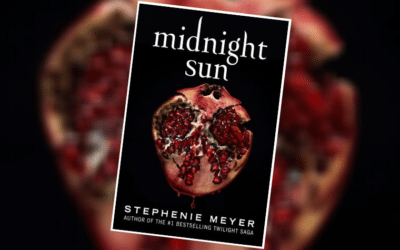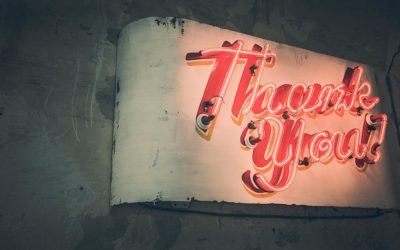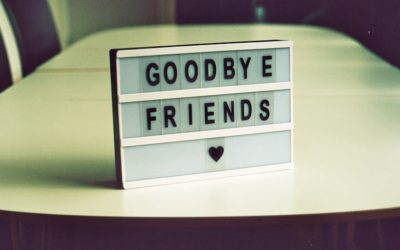Brian K Vaughan’s and Cliff Chiang’s Paper Girls Vol 1 takes off the glasses and transports readers into a balanced depiction of the 1980s that is both parts dark and comedic because no decade is really all sunshine and scrunchies, right?
Okay, to be fair I am a child of the 90s (#AllThat) and thus never experienced the 80s, but my mom fact-checked the intro and said it’s close enough. She also called the 80s “tacky.” I have seen her yearbook and would concur.
Like most other millennials what I really know about the 80s are from John Hughes movies and films made after 2010.
I’ve gathered that there was a lot of bad hair and teal. So much teal.
Granted, Madonna is way more fun than the Russians and the Cold War, but what’s refreshing about Vaughan’s look back on the decade is its real sense of place and lack of overtly 80s cliches. The art nods when appropriate – the colors, the sketchy style – this is more than a hackneyed flashback to a beloved generation.
While Paper Girls delivers on the teal and bad hair, it would punch John Hughes in the face. These girls give a middle finger to the colloquial coming of age story.
I’ve heard a few writers compare Paper Girls to The Goonies, and while I’d agree that Vaughan’s story is infinitely more 80s-adventure-comedy than romcom, a more accurate comparison would be Netflix’s Stranger Things.
Like Stranger Things the characters of Paper Girls are endearing due to their age appropriate naivety but don’t confuse that for helpless and sophomoric. These protagonists don’t wait around for adults to fix the problem.
Why ask a clueless grown-up to do the job when you can do it better yourself? Also, they might all be dead so there’s that…
What Vaughan does incredibly well is respecting his characters, whether they’re cursing alien parents (Saga) or cursing 12-year-old girls.

Their age is not a limitation to their characterization. In fact, age plays an enormous role in Paper Girls, but let’s hammer out the plot of Vol 1 first.
STORY TIME
It’s 1988, in the early morning after Halloween or as Erin calls it “Hell Morning.” She’s off on her bike to deliver papers when a group of teenage boys starts harassing her because nothing screams “I’M A MAN” like creeping on a 12-year-old.
Lucky for Erin the other paper girls, Mac, Tiff and KJ, show up in the nick of time and after some smack talk – with one character using a bigoted word – the guys scram.
This unfortunate word choice, “fag” is another reminder of where we’re at. This isn’t 2017 Portland. It’s suburbia. Characterization like this is an interesting Vaughan trademark. He doesn’t condone it, but he’s realistic about how teenagers talk.
Being familiar with Vaughan’s work I’m looking forward to seeing him broaden the mind of this character.
I was pleasantly surprised to see Erin call out her new potential friend on the “f-word,” as she called it. Erin seems a little sheltered but the kids got a backbone.
The other three paper girls provide a nice balance to Erin’s level head.
Tiff and KJ aren’t as fleshed out as the other two girls in Vol 1, but there are some beautiful hints at what’s to come: Tiff’s tech speak and KJ’s affinity for field hockey sticks – but let’s delve into the heavy hitter of this story:
BEST CHARACTERS:

Mac is hardcore. She’s 12, she was the first girl “paperboy,” she smokes (I am very concerned about this) and could probably drink more whiskey than me.
She’s the latchkey kid to end all latchkey kids.
Where as Mac is all sharp edges and curse words, Kim is delightfully, and sometimes painfully, relatable. She’s a girl on the brink of adventure, young and unsure of herself but slowly coming into her own. Vaughan does an excellent job of adding dimension to Kim by making her snarky in one panel and then hesitant in the next.
Kim’s 12, but I think I’m her now.
There’s who she is and who she’s wanting to be and they’re so close to overlapping.
Both of these young protagonists are bold in their own right, which makes a budding friendship extra amusing.
FEMALE FRIENDSHIP REPRESENTATION
I’ve heard that life threatening drama brings people together – or I’m making it up. Either way, Vaughan makes the bond that developing quickly between the paper girls believable.
From the first panel where Mac and her crew roll in to defend Kim to a (semi-spoiler) heart-stopping moment where Kim’s in mortal danger, these girls have each other’s’ backs.
Girl-on-girl hate seems kind of petty when dinosaur-birds are popping out of the sky, (but something tells me these characters would be above that either way.)

SO WHAT’S NEXT?
At this point, it would be fair to assume that the biggest enemies of the paper girls will be boys (and smokers cough).
With a group of young girls riding around a dark Ohio suburb, garden variety sexism and real life predators could honestly be the whole plot here because if you’ve ever been a teenage girl that really is enough to terrify you.
But c’mon. This is Vaughan.
There is definitely some weird sci-fi shit about to happen.

After the leisurely pace in the first 20ish pages, Vaughan and Chiang thrust us into a bizarre mystery where the sky literally splits open, winged dinosaur-like birds fly through the air, adults from the future speak a weird neo-English, people are transported through time and bugs clean up gunshot wounds.
A straightforward period piece lapses into a sci-fi time traveling adventure and becomes decidedly not a period piece because it’s no longer 1988.
By the final pages, the sides (or at least two of them) become clear: young versus old.
This setup is reminiscent of a handful of iconic 80s movies, but what makes Paper Girls so readable today is the age-based us-against-them mentality appears in every generation.
This is why it’s important that Vaughan doesn’t rely on nostalgia and artifacts of the 80s to fuel Paper Girls.
The characters are the meat of this story.
You root for these girls, hell you were these girls – at least one of them. Maybe in a different decade, maybe you’re them now. It doesn’t matter.
Especially considering that there’s time travel.
Pick up Paper Girls Volume 1 and prep for things to get weird(er).
 Written by Cassidy
Written by Cassidy
Cassidy is a journalist and writer living in Missoula. She’s currently working on her dark comedy webseries The Last OK Place. After a forced intervention in 2015 she begrudgingly came out as a hipster. Follow her on Twitter: @CassBlues




